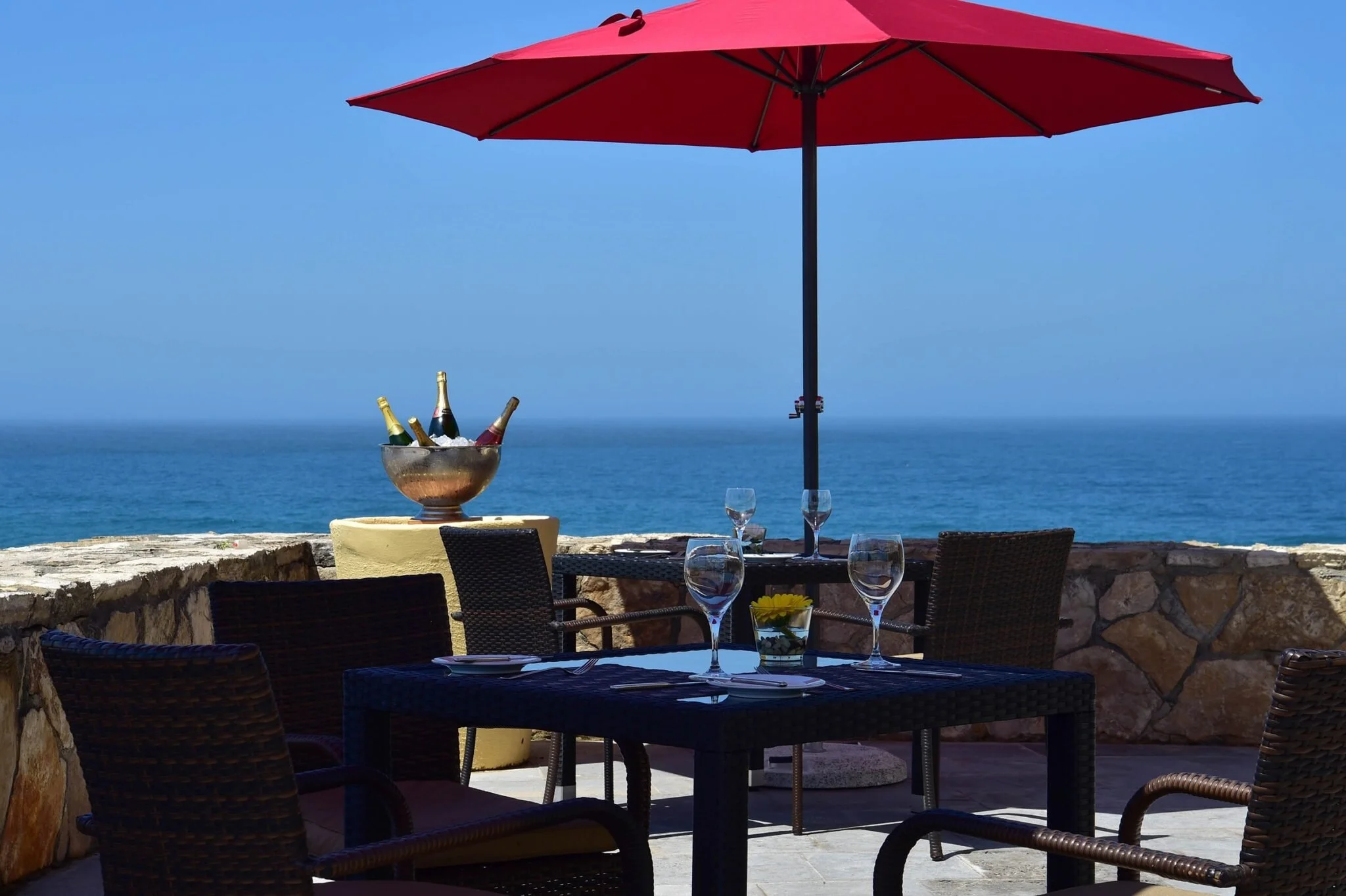
- The Drink List -
Raise Your Glass: Best Spots to Drink Champagne in Lisbon
Check out these restaurants & bars to enjoy a bubbly summer!
There’s something about champagne that makes any moment feel like a celebration (even if it’s just a Thursday afternoon in the city). Now that summer’s upon us, there’s nothing better than sipping something fresh while watching the sun set over the Tagus River – especially if it’s a good champagne. If bubbles are your definite jam, keep scrolling to peruse our selection of bars and restaurants where a fizzy drink just feels right.
While its roots lie in the heart of France, champagne has long found a warm welcome in Portugal. From elegant hotel terraces in Lisbon to sunlit celebrations along the Algarve, this is a drink that pairs beautifully with the country’s vibrant seafood traditions and sun-soaked lifestyle. Whether raising a glass at a local wine bar or marking life’s special moments, the refined bubbles keep adding a distinctly French sparkle to Portugal’s modern dining scene. Keep scrolling to find our top spots to sip and relax in Lisbon and Cascais!
Our Champagne Edit: Lisbon & Cascais
If you’re reading this, you probably consider champagne to be much more than just a celebratory drink. You’re an enthusiast who truly enjoys the feeling of freshness that those bubbles and crispness offer. And you’re also probably a fan of Brut champagne – a dry sparkling wine that is often paired with different foods, namely fish and seafood.
But do you know the story behind the invention of Brut and who decided that champagne tasted better without sugar?
The Woman Behind the Brut
Brut champagne was created by a French woman, no less: Madame Louise Pommery. She inherited her late husband’s brand, Pommery, and decided to, like wine connoisseurs say, give it a swirl.
The story begins in the heart of Reims, France, with the birth of a house and the vision of an extraordinary woman who would forever reshape the world of sparkling wine. Champagne Pommery was founded in 1858 by Alexandre Louis Pommery, but much of the brand’s reputation rests on the pioneering spirit of who would soon become known as Madame Pommery.
When Alexandre Louis Pommery, the original founder, passed away shortly after establishing the business, his widow, Louise, stepped into the role of leadership — a rare and bold move for a woman in 19th-century France. At the time, Pommery was primarily involved in the wool trade, but Madame Pommery made the decisive shift to focus entirely on champagne production. However, her greatest innovation was still to come.
The Drier, the Better
At a time when most champagnes were sweet, heavily dosed with sugar to appeal to the Victorian palate, Madame Pommery envisioned a drier, more elegant drink that would better reflect the finesse of the region’s terroir. That’s how, in 1874, she introduced the very first Brut Champagne, Pommery Nature. It was revolutionary: a wine that expressed purity and freshness, with little to no added sugar, allowing the subtlety of the grapes to shine through. This groundbreaking creation effectively established an entirely new category, which remains the world’s most popular style of sparkling wine to this day.
Madame Pommery’s fearless leadership and refusal to conform to the norms of her time did more than ensure the survival of her business — it transformed the entire champagne industry. Her pioneering Brut style not only captured the evolving tastes of the modern consumer but also cemented her place as one of the most influential figures in the history of sparkling wine.
Beyond Champagne
Beyond her contributions to winemaking, Madame Pommery was also a visionary in marketing and architecture. She commissioned the construction of the iconic Pommery Estate, including the majestic Elizabethan-style château and the labyrinthine chalk cellars beneath Reims — some of the most impressive in Champagne — which today are both a testament to her ambition and a living museum of Pommery’s storied past. The Pommery Estate, in Reims, is the size of the Louvre, has 18 km of cellars – part of UNESCO’s World Heritage List – and frequently holds contemporary art exhibitions. Villa Mademoiselle itself is a true Art Nouveau masterpiece really worth the visit.
Pommery has also been strongly involved in the world of art by contributing to some of the biggest events in the world, namely the Venice Biennale. Whether through installations in its historic chalk cellars or its presence at international art events, Pommery seamlessly blends the worlds of fine wine and fine art.











